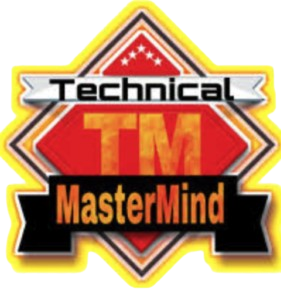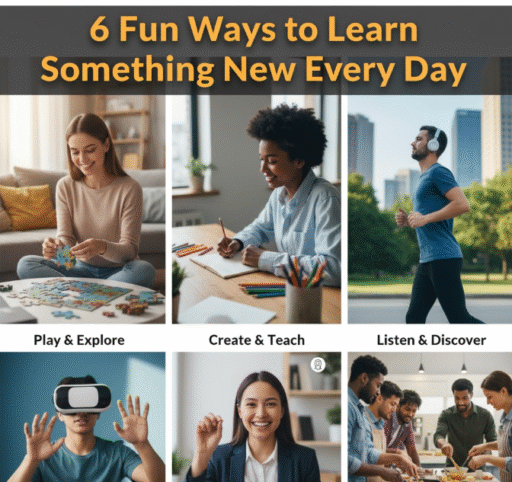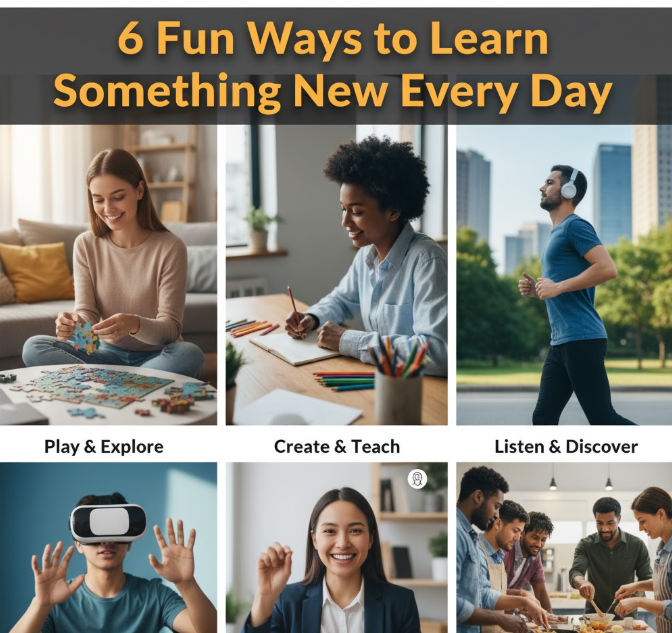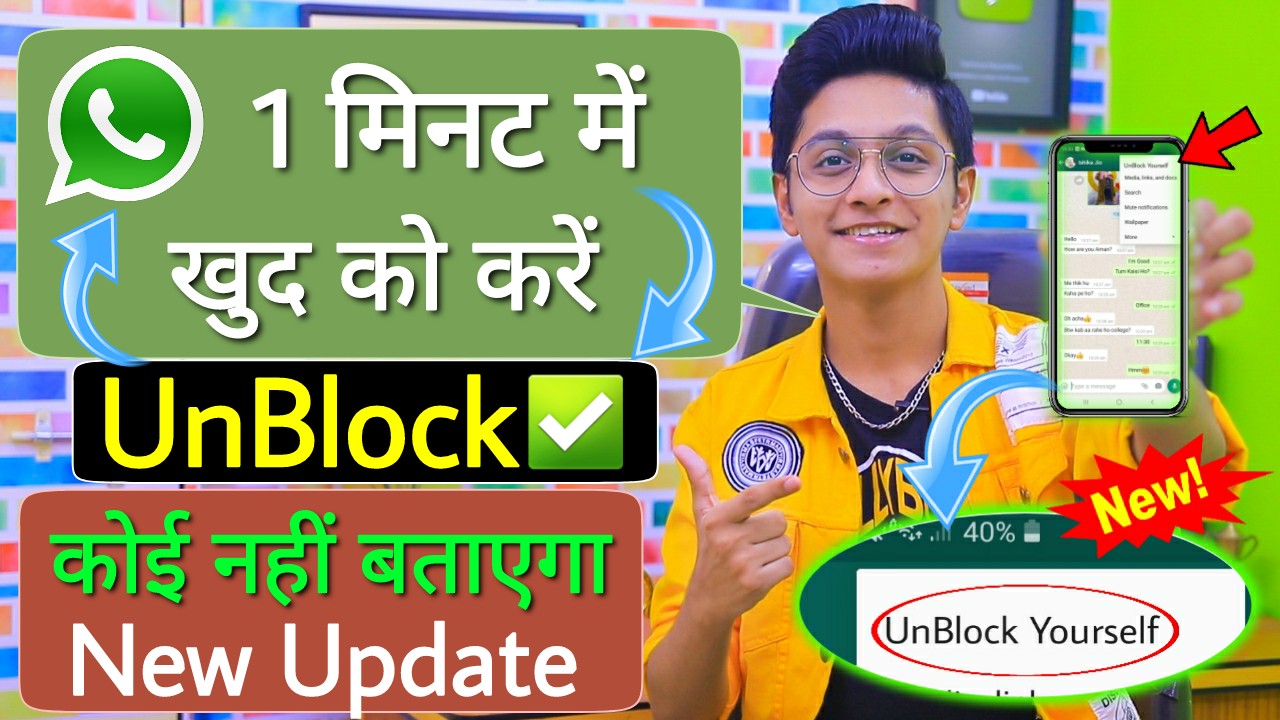Educational doesn’t have to mean homework. Indeed, the very best kind of learning occurs when you are having so much fun that you don’t even realize you are doing it. Whether you’re interested in cooking, the universe or learning a new language, there are an infinite number of ways to feed your brain something novel every single day.
The reality is, our brains are built to learn. They actually want new information and experiences. When you learn new facts, new synapses are added so that your neurons can convey information more quickly and efficiently as an activity becomes easier to do, said Esther Graudiker, a visiting scientist at Carnegie. Think of your brain as if it’s a muscle – the more you work at exercising it in different ways, the stronger it becomes.
But the problem for many is this: Traditional learning can get dull, and become repetitive. Not everyone can sit through lectures, commit facts to memory or plow through challenging textbooks. The good news? Learning in the world of today looks nothing like that. Playing games, watching videos, talking to people around the world and even going for a walk around your neighborhood can be educational.
In this article, we will show you six truly fun ways to learn something new every day. As mentioned above, these are not your average “study harder” tips. Instead, they’re practical, enjoyable techniques that you can easily fold into your regular routine without it seeming like more work. In the end you’ll have a new toolkit of tactics for keeping your mind active, engaged and ever expanding.
Now, let’s get into these delightful ways to become a lifelong learner without the drear.
Make Good Use of Your Commute
Your commute is a solid gold time for learning, whether you are on a bus, train or walking to school. Rather than default to mindlessly scrolling through social media or staring out the window, you can turn this “dead time” into one of your most productive stretches of time during the day.
Podcasts are commute-learning game changers. As distinct from videos which demand all of your attention, podcasts allow us to learn while doing something else. There is a podcast about literally anything you can imagine, ranging from true crime mysteries that impart psychological insight and law enforcement know-how, to comedy programs that educate the listener about history, or science shows that make complex topics accessible.
So much of the magic of learning via podcasting is in variety. One day you might eat up a 20-minute episode on ancient Egypt, the next day ingest another about how smartphones function and the next learn tricks to sleep better. This variety keeps your brain active and prevents learning fatigue.
Audiobooks work similarly well. Many famous and bestselling books are in audio. You can “read” a whole book in a week just by listening on your commute. What’s more, many apps allow you to listen at a faster pace, so once you get comfortable, you can consume content even faster than you have been.
Another great option is learning apps with audio. Apps like Duolingo, Babbel or Pimsleur provide exercises tailored to listening specifically. Not only can you practice your pronunciation and learn new vocabulary, but you also can train your ear to hear a variety of accents — all while walking or riding.
Here is what a realistic schedule might look like:
| Day | Learning Activity | Time |
|---|---|---|
| Monday | Listen to history podcast | 20 minutes |
| Tuesday | Take language app lessons | 15 minutes |
| Wednesday | Listen to a chapter on science audiobook | 25 minutes |
| Thursday | Listen to business/career podcast | 20 minutes |
| Friday | Listen to an art or culture podcast | 20 minutes |
The key is consistency. Moreover, a mere 15-20 minutes every day would accumulate to 100+ hours of learning in just one year. That’s enough to have a conversation in a new language, comprehend an entirely different field or plow through dozens of books.
Turn Every Meal Into a Mystical Expedition
Food also makes for one of the most enjoyable ways to learn about other cultures, geography and chemistry — all while studying history. Each dish is a story — not just of the people who made it and the land where the ingredients were raised, but also of the traditions that have influenced how it’s cooked.
Start by picking one new recipe a week from a country you’ve never cooked from. When you cook Thai curry at home, you’re more than cooking dinner — you’re also learning about Southeast Asian spices, finding out why certain ingredients work together and tasting a country’s culinary traditions. The same goes for developing recipes for Mexican tamales, Japanese ramen or Moroccan tagine.
But the learning shouldn’t end with following a recipe. Spend a little while looking up the history of the dish. Why do we use so much garlic? Where does Indian curry come from? How did pizza become popular internationally? These questions take you down some interesting rabbit holes of cultural history.
The food science of cooking is equally intriguing. When you learn why baking soda makes cakes rise, why meat should rest after cooking or how heat turns ingredients into magic, you’re learning real chemistry and physics. Cooking shows like “Good Eats” are great at breaking down the science and keeping it fun.
You can also eat your way to better health and nutrition. Knowing what various nutrients do for your body, how to balance them, and which foods optimize brain functions makes every meal a lesson in biology and health science.
Here’s how to get the most learning out of food:
- Check out cooking shows from other regions on YouTube
- Read the historical bits in cookbooks, they’re often super interesting
- Stop by an ethnic grocery store and inquire about strange ingredients to employees
- Participate in online cooking groups where people exchange food knowledge of their cultures
- Consider eating with chopsticks, your hands (certain foods), traditional utensils and so on
- Take pictures and notes on your cooking experiments
Engage with Real People Around the World
There is so much power in learning from people as opposed to books or the screen alone. Conversations make knowledge come alive in a way that studying alone simply won’t.
Language exchange partners are one of the most valuable tools for daily practice. Sites and apps like HelloTalk, Tandem or ConversationExchange pair you with native speakers who want to learn your language. They use you for half the conversation to help them in English, then they use the other half of the conversation to teach you their language. It’s free or very cheap, it works and you often make lifelong friends in the process.
But you don’t need a human connection to learn language. It is entirely possible to find online communities for anything you are interested in, from shoelaces and magnets to hydrogeology. Whether you like photography, chess, coding or birdwatching, there are forums and Discord servers and groups on social media where expert people lurk to share their expertise.
The key is to participate, not lurk. Question everything and share your own life experiences. By teaching what you know to others, you reinforce your own understanding of the subject (it’s called the “protégé effect,” and it’s one of the most effective learning tools there is).
Virtual workshops and webinars have exploded in popularity. Hundreds of organizations, museums, universities and experts offer free online sessions where they impart their specialty knowledge. How about a live astronomy lecture from NASA, or a painting workshop with an art gallery or business seminar with successful entrepreneurs — all from your couch.
Mentorship, even in an informal sense, tremendously speeds learning. Compared with teaching yourself, finding someone who’s where you want to be in any given skill can reduce the time it takes you to get at their level by years. They can alert you to frequent mistakes, suggest the most helpful resources and give you the personalized feedback that no book can.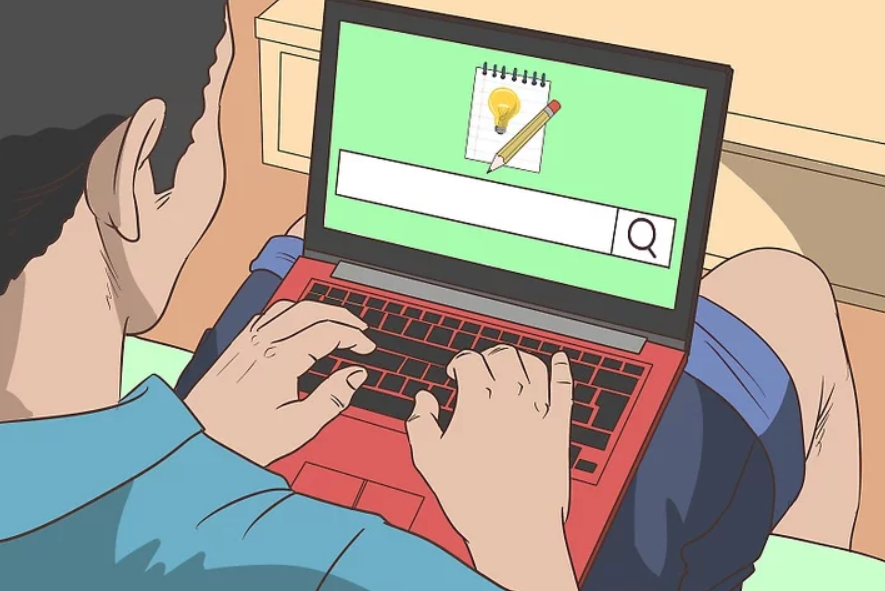
Convert Your Downtime Into Micro-Learning Zones
We spend a lot of time waiting, an astonishing amount in fact — waiting for appointments, waiting on lines, waiting for meals to cook (and then there’s eating and cleaning things up), much of our lives can feel like we’re trying to fill the gap between one happening and the next. It feels like nothing can happen in these small increments of time, but micro-learning is perfect for it.
Micro-learning is just what it sounds like: learning in short, tiny, bite-sized portions. No longer do you have to commit to hour-long study sessions every time you want to learn something new. This method is fantastic, because it leaves you no excuses for not finding time.
Apps are made for micro-learning. Duolingo offers 5-minute language lessons. Khan Academy: Short video explanations of math and science concepts. Blinkist condenses non-fiction tomes down into breezy 15-minute reads. Brilliant.org offers fast, interactive problems in math and science.
YouTube Shorts, TikTok and Instagram Reels have materialized as surprisingly solid learning platforms. Fine, interesting information, quick how-to’s and intriguing facts are distilled into 60-second videos by creators. You can pick up a new word, find out about something in history or watch a science experiment explained in the time it takes to wait for your coffee.
Flashcard apps such as Anki or Quizlet are great for downtime. From memorizing vocabulary to cramming for a test to learning country capitals, you can pull out a few cards whenever you have a spare minute. The algorithm behind these spaced repetition apps is backed by science and has been shown to help information stick in your long-term memory.
Even reading short articles counts. Pocket, Feedly or Apple News allows you to save interesting articles for later reading. While you wait, pull up some article and read for a couple of minutes. And bit by bit those small readings become a large wealth of information.
Here’s the daily time breakdown:
| Waiting Activity | Average Timing | Learning Content |
|---|---|---|
| Waiting for bus / ride | 5-10 min | Language app or article |
| In line at store | 3-5 min | Educational video or flashcards |
| Before an appointment | 10-15 min | Podcast or long article |
| Commercial breaks | 2-3 minutes | Quick facts video |
| Waiting for food to heat | 3-5 minutes | Flashcard review |
The cumulative effect is powerful. Even if you shaved off just 20 minutes of waiting around every day, that’s over 120 hours in a year — time enough to learn quite a bit about anything you have in mind.
Play Games That Secretly Educate
Gaming is maligned as a time suck, but the right games are actually sophisticated learning tools masquerading as entertainment. Your brain can’t tell the difference between “fun” and “educational” – it simply knows that it is being used, challenged, and rewarded for solving an issue.
Strategy games teach students systems thinking and planning. Games like Civilization teach history, geography and resource management as you construct empires. You’ll explore alternative civilizations and technological progress, as well how geography impacts growth. Chess helps you think ahead and recognize patterns. And even city-building games like SimCity or Cities: Skylines carry lessons in urban planning, economics and cause-and-effect.
Puzzle games strengthen problem-solving abilities. Portal and The Witness develop spatial reasoning and logic. Sudoku and crosswords build pattern recognition and vocabulary. These games require your brain to work in ways it is not accustomed and make connections between different ideas.
Vocabulary sticks better when learning a language through games than traditional methods of study. Influent turns the computer screen into a fun game to learn a language, as you click objects to hear their names. In Wordament, your vocabulary is pitted against others in ways that don’t remotely feel like studying.
Educational games that are meant for learning can be appealing in certain ways. Kerbal Space Program will teach you orbital mechanics and physics. Human Resource Machine is a computer puzzle game about programming. In making language learning so game-like, Duolingo has persuaded millions of people to play daily without feeling as if they’re studying.
Even the most lowest-common-denominator commercial entertainment games do this. Multiplayer games can help kids’ communication and cooperation. Reaction time and pressure decision are improved in action games. Open-world games also frequently feature accurate historical details and real geography.
It is about selecting the right games that have learning value and being intentional about what you are getting from them. Ask yourself, “What am I gaining from this game?” If the answer is nothing, perhaps it’s time to switch to something that makes new demands on your brain.
Create a Personal Learning Project
There’s nothing that drives learning like actually working for something you can see. When you focus on making something — a website, a garden, or a story, just as examples (it could be anything) — you will automatically learn everything you need to do in order to make it.
Project-based learning is effective because it puts information in context. You’re not learning HTML for the sake of knowing it, instead, you learn HTML because you need to know how to create a website. This sense of mission makes information stick better, and keeps one motivated in the face of challenges.
Pick something that you really care about. It might be a piece of furniture, which would show you carpentry, measurements, tool usage and properties of materials. It could be starting a YouTube channel, and learning video editing, storytelling, public speaking and audience engagement. Maybe it’s building a basic app, which would introduce you to programming and design principles while also teaching you about user experience.
The learning naturally occurs as you run into roadblocks. When you don’t know how to do something, you look it up, and try it yourself — maybe fail at first and try again. This trial-and-error method engenders much more profound learning than passive learning ever could.
Phasing out your project leads to daily learning being more uniform:
Phase 1 – Discovery and Planning (Week 1 & 2)
- Read about projects others like you have done
- Gather resources and tutorials
- Produce a rough plan and timetable for the project
- Figure out what strengths you must build on
Phase 2: Training Phase (Week 3–6)
- Take tutorials on necessary skills
- Practice techniques in isolation
- Be a part of project-related communities
- Question and listen; it’s a master teacher skill
Phase 3: Creation (Week 7-10)
- Start building your project
- Troubleshoot problems as they arise
- Learn through doing and adjusting
- Note what you did for next time
Phase 4: Refinement (Week 11-12)
- Test and improve your creation
- Learn from mistakes and iterations
- Seek feedback from others
- Celebrate end, reflect on learning
But the thing about project-based learning is that it never really ends. You finish one project then you start the next, continuing to increase your skill set and pipeline. Every project is not just about what you learn in that context but how you learn, solve problems and push through obstacles.
Building Your Daily Learning Habit
The trick to learning something new every day isn’t more time but better use of the time you already have. Each of these six tactics is effective because it injects learning into something you already do — or would want to anyway.
Begin with the one you are most attracted to. You may find yourself starting to listen to podcasts during your commute, or you might decide that every week you’re going to try one new recipe. Once that is a habit, you can add another one. It won’t be long until learning isn’t something you have to make yourself do – it’s simply a natural, fun part of your day.
Compounding the effects of daily learning is incredible. If you learn only one new thing a day, that’s more than 365 pieces of new knowledge, skill or experience over the course of a year. Not to mention everything you’ll learn indirectly as a result of those primary lessons. Over time, this makes you a smarter, more capable and interesting person.
And recall: Learning is not about getting everything right. We are talking about curiosity, exploration and growth. Some days, maybe you’d learn something deep and paradigm-shifting. Other days you might learn only a single nugget or small skill. Both are valuable. They both keep your brain stimulated and engaged.
The world out there is full of interesting information, skills to master and things to do. Everyone you will ever meet knows something you don’t. Each place has its own lessons to impart. Any difficulty is also an opportunity to grow new skin. With these six fun methods, you can never get bored of learning or growing.
So choose your favorite approach from this list, and begin taking action today. Your future self will thank you for the investment you are providing in your current role as a lifelong learner.
Frequently Asked Questions
How long a time should I spend learning something new every day?
You don’t need hours of specialized study time. 15-20 minutes per day even makes a huge difference if sustained over time. The secret is in regularity rather than long, marathon sessions. Micro-learning over the course of the day (commutes, waiting time, meals) can accumulate to 30-60 minutes in a way that doesn’t feel like you’re carving out special study hours. Start with as little as 10 minutes per session and build from there.
What if I try learning about something and then lose interest?
This is entirely normal and there’s no cause for concern. You won’t be fascinated by every subject, and that’s okay. The object is to explore, not obligate yourself to everything you attempt. Do try new subjects out, but do not feel obligated to stick to anything that doesn’t click (give things a week, maybe two?). Get interested in something else. You should feel engaged, not like it’s a chore.
Are games and fun activities a good way for me to learn?
Absolutely! Studies demonstrate that engagement and fun actually improve memory retention and learning. When you’re having fun, your brain will release dopamine, which enhances neural connections and makes it easier to remember what you are learning. Sometimes, fun game-based learning is more effective than rote memorization because you’re actively using your brain rather than passively consuming information. The trick is to prioritize activities with real educational value – not just mindless entertainment.
How can I motivate myself to learn something new every day?
The secret weapon against learning fatigue is variety. Not all work needs to be done on the same thing each and every day — switch up what you are doing! Monday might be about learning a language, Tuesday might be cooking; Wednesday might be educational videos. Also, try to tie learning in to your current interests and goals. Motivation is much easier when you can see how that new information serves your life. Lastly, take time to celebrate small wins and monitor your own progress to keep yourself motivated.
Is it better to get good at one thing or learn a little bit about many things?
Both are important, and you can even do both at the same time. One single place that you are building deep expertise in allows you direction and measurable progress. At the same time, familiarizing yourself with many diverse subjects will ensure that learning is always fresh and exciting, and you never know what previously unconnected knowledge will come in handy. Try the 80/20 method: Give yourself 80% of learning time to devote to one or two main interests, and 20% to wander methodically through random topics that pique your curiosity.
What are the free resources to learn on a daily basis?
The internet provides amazing free learning resources. YouTube has educational channels about anything under the sun. Khan Academy offers free online math, science and humanities classes. Duolingo offers free language learning. Your local library has a wealth of free books, audiobooks and sometimes even online learning platforms. Podcasts are overwhelmingly free. Wikipedia is not great, but it’s a fabulous place to start learning about new things. Many universities publish free lectures online using platforms like Coursera and edX (you can audit most courses for free).
How do I retain what I learn for the day?
Participating is always more fun than observing. Write down a sentence or two about what you learned from the work. Explain how the concept works to yourself, or imagine that you are teaching it to someone else (or even an empty room). Use knowledge as soon as possible – if you learn a new word, use it that day. Spaced repetition helps, too — you review what you’ve learned after a day, then a week and finally a month. Making connections with new information and things you already know also can help point memory in the right direction.
What if I don’t have technology for apps and online learning?
The old ways of learning still work so well. It’s free from your library, and it gives deep knowledge. Talking to knowledgeable people in your community makes learning personal. When you look at the world through curious eyes you learn all sorts of things about nature – people and how things work. Skill practice: Hands-on practice in cooking, drawing or building something requires no technology. Most community centers offer free classes and workshops. Learning doesn’t have to involve technology – it just involves curiosity and attention.
